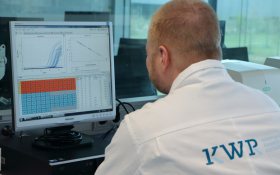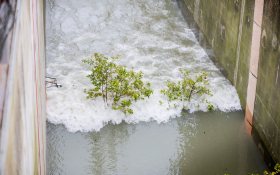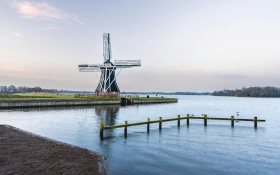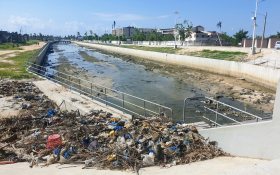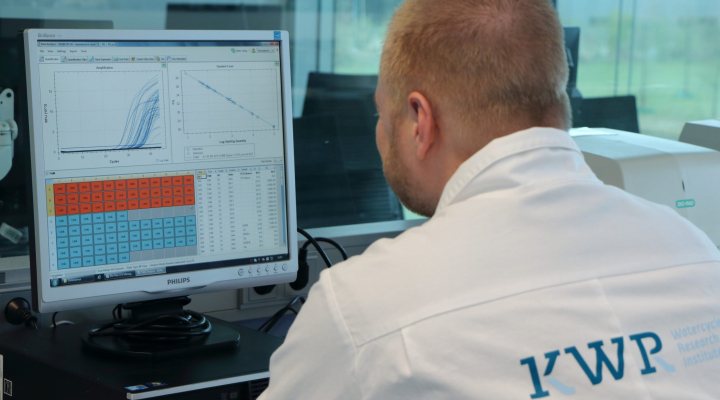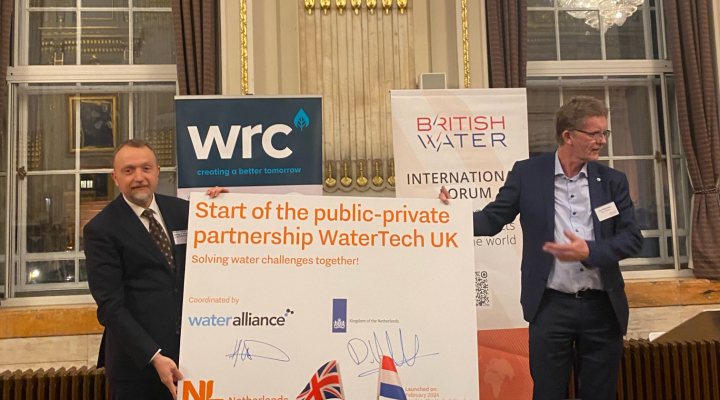
Dutch-made WasteShark aquadrones for cleaner Canadian waters
PortsToronto, in partnership with the Dutch company RanMarine, has introduced two WasteShark aquadrones to capture floating debris and plastic pollution.
This pioneering initiative was made possible through the DHI progamme of the Netherlands Enterprise Agency, a subsidy scheme through which the Ministry of Foreign Affairs of the Netherlands supports Dutch SMEs with their demonstration projects, feasibility studies, and investment preparation projects that contribute to the Sustainable Development Goals.


Water drone technology
RanMarine’s WasteShark is an innovative aquadrone designed to combat water pollution in harbours, marinas, smart cities and other water bodies. Created and sold globally by the Dutch company RanMarine Technology, this aquatic robot resembles a whale shark and operates by "swimming" through the water's surface collecting floating waste, debris or biomass.
The WasteShark's design features a front opening that funnels waste into its removable storage basket, capable of holding up to 180 litres of trash. The drone can navigate waterways with precision, either guided by remote control or via autonomous programming. Its low environmental impact, powered by rechargeable batteries, contributes to its sustainability.
Equipped with additional sensors and cameras, WasteShark’s are capable of monitoring water quality such as PH or Oxygen levels, detect hydrocarbons, and gather data on pollution levels for reporting via the RanMarine Connect portal. This information aids in proactive environmental management and pollution prevention strategies.
The WasteShark's unique design and agile functionality make it an intelligent and versatile solution for addressing water pollution and protecting aquatic ecosystems. By efficiently collecting surface debris, detecting pollutants, and contributing to data-driven environmental efforts, it plays a vital role in the ongoing battle against waterborne waste.


WasteShark’s Canadian debut
In tandem with PortsToronto’s Seabins, the autonomous Wastesharks named Edd and Flow will adeptly capture floating debris and plastic pollution, championing sustainability. Employing a Roomba-like approach, they effortlessly skim the water surface, channelling waste through a specialised catch basin and net. With a robust 180-litre capacity, each Wasteshark can eliminate up to 1,100 lbs of waste daily.
Based at the Outer Harbour Marina, these aquatic wonders will traverse target zones across the Toronto Harbour and waterfront, collecting data while supporting PortsToronto’s research partnership with the University of Toronto Trash Team.
Tacking plastic pollution
The PortsToronto Trash Trapping Programme, led by PortsToronto and the University of Toronto Trash Team, employs trash-trapping technology and solutions-based research to tackle plastic pollution and protect Toronto’s waters for future generations. Since 2019, the programme has removed hundreds of thousands of small pieces of plastic pollution from the Toronto Harbour, moving the needle toward cleaner water in Lake Ontario.
